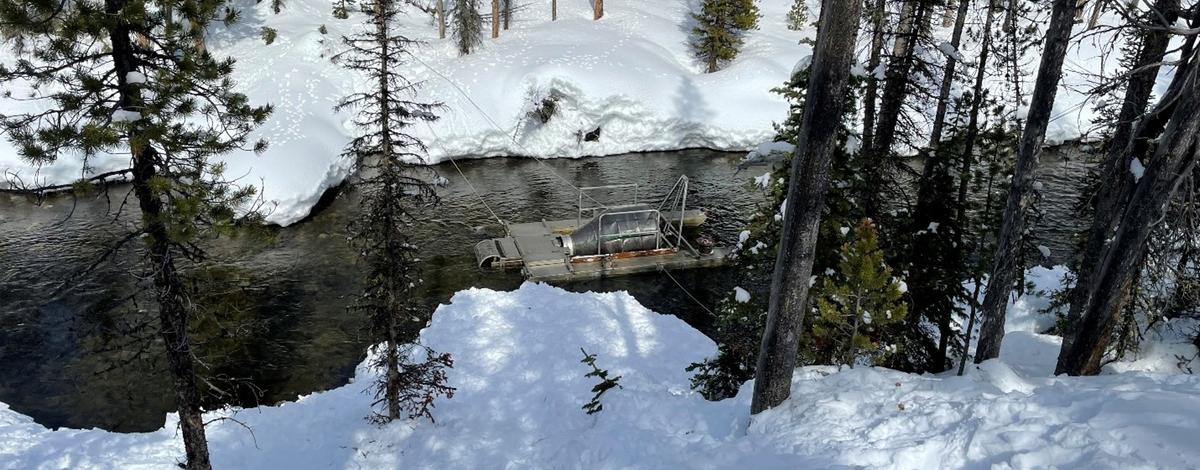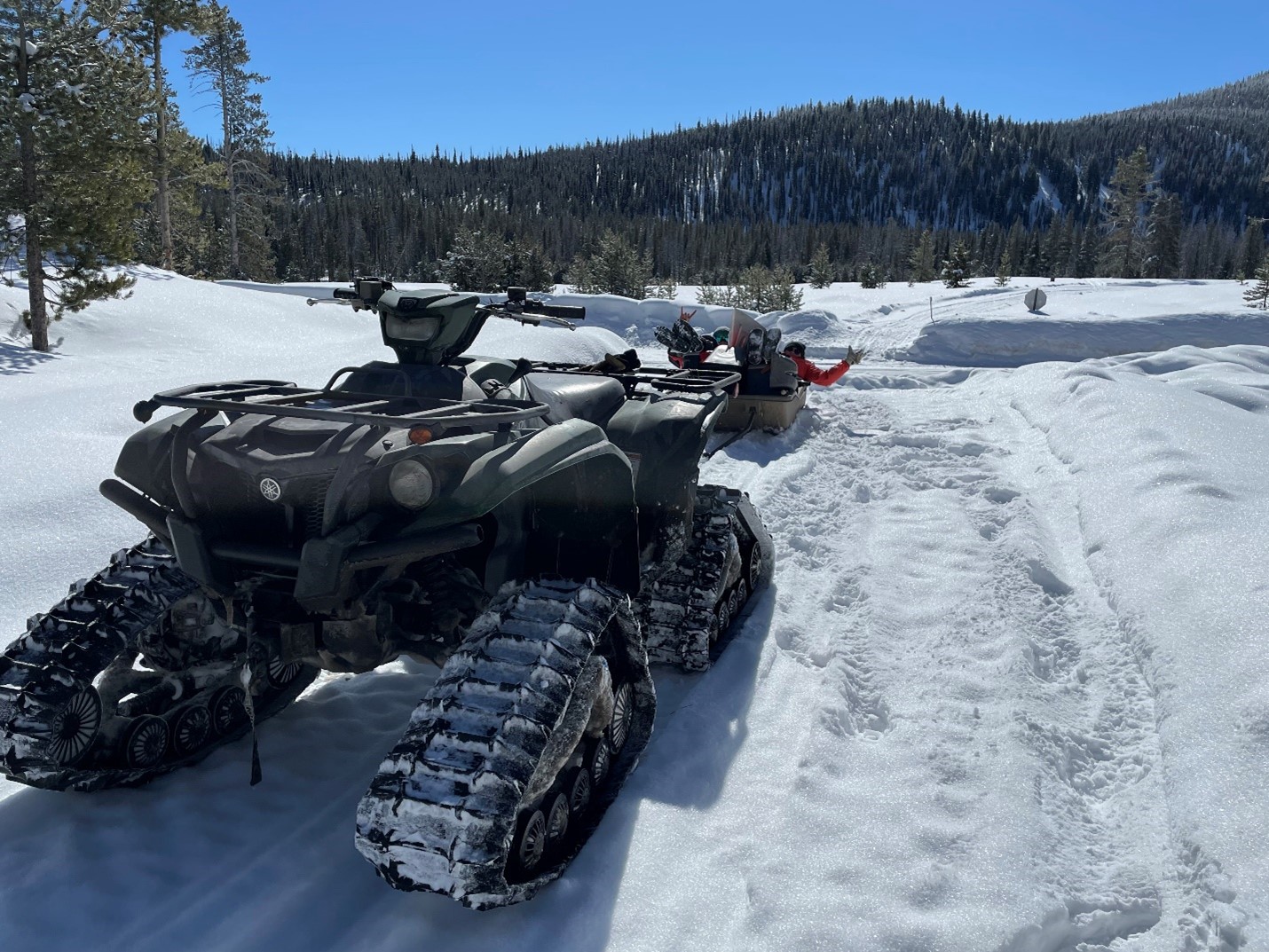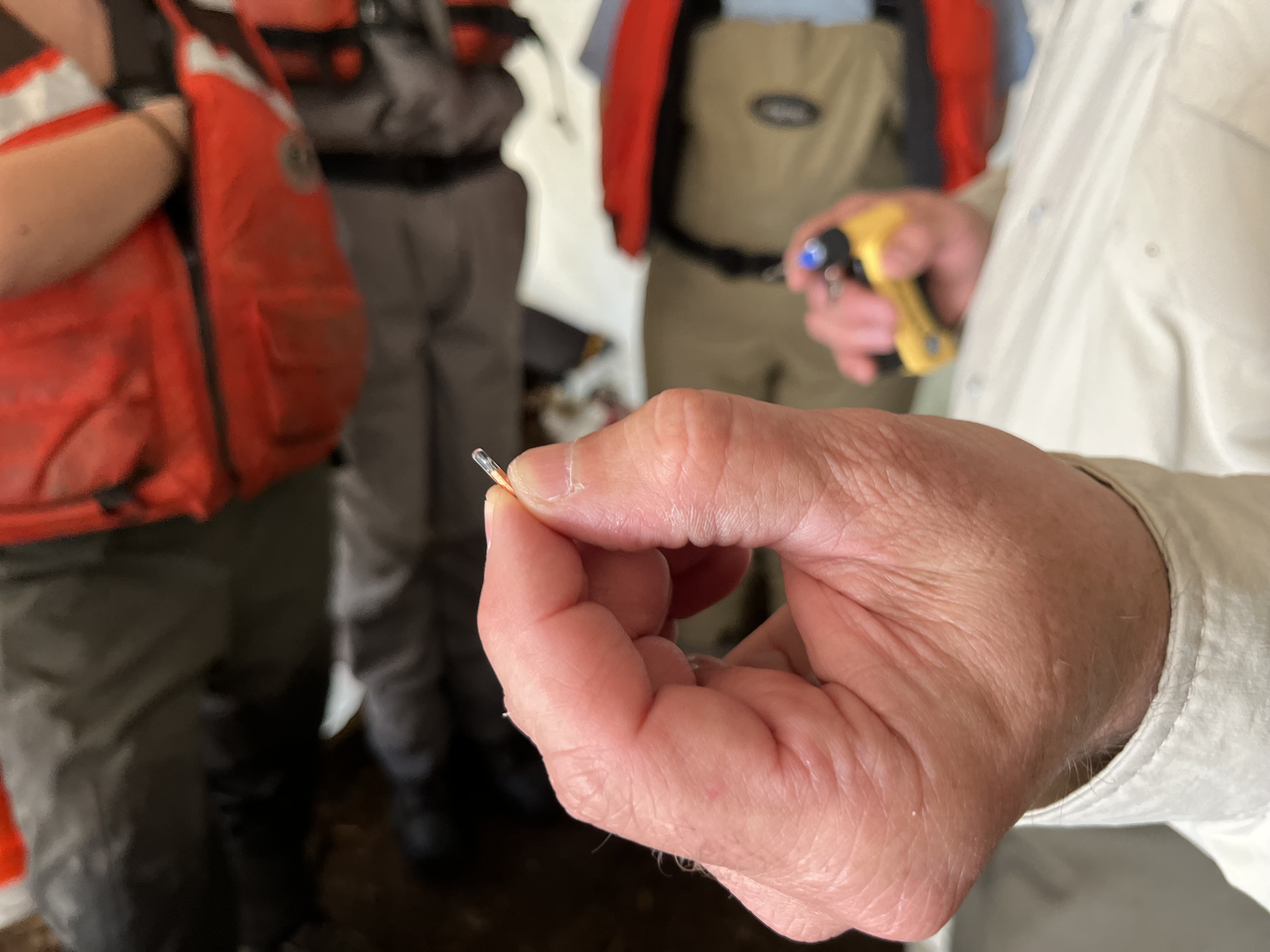Another season of screw trapping has begun near Stanley. The rotary screw trap on Marsh Creek, a tributary to the Middle Fork Salmon River, is on the border of the Frank Church River of No Return Wilderness. In the winter and spring, it is only accessible via snowmobile or ATV with tracks. There is usually at least 6 feet of snow at the site when the trap is being installed in mid-March.
There are rotary screw traps operated throughout the state, but the trap on Marsh Creek is unique for its remoteness and key spawning area for Chinook salmon. The upper Middle Fork Salmon River drainage near Stanley is one of the furthest inland wild steelhead and Chinook salmon spawning migration in the Columbia River basin.



